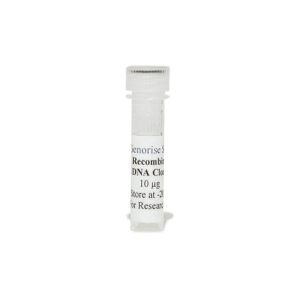Nori Human NOX4 ELISA Kit
$461.00 – $832.00
This ELISA kit is for quantification of NOX4 in human. This is a quick ELISA assay that reduces time to 50% compared to the conventional method, and the entire assay only takes 3 hours. This assay employs the quantitative sandwich enzyme immunoassay technique and uses biotin-streptavidin chemistry to improve the performance of the assays. An antibody specific for NOX4 has been pre-coated onto a microplate. Standards and samples are pipetted into the wells and any NOX4 present is bound by the immobilized antibody. After washing away any unbound substances, a detection antibody specific for NOX4 is added to the wells. Following wash to remove any unbound antibody reagent, a detection reagent is added. After intensive wash a substrate solution is added to the wells and color develops in proportion to the amount of NOX4 bound in the initial step. The color development is stopped, and the intensity of the color is measured.
Alternative names for NOX4: NADPH oxidase 4, RENOX
This product is for Laboratory Research Use Only not for diagnostic and therapeutic purposes or any other purposes.
- Description
- How Elisa Works
- Product Citation (0)
- Reviews (0)
Description
Nori Human NOX4 ELISA Kit Summary
Alternative names for NOX4: NADPH oxidase 4, RENOX
| Assay Type | Solid Phase Sandwich ELISA |
| Format | 96-well Microplate or 96-Well Strip Microplate |
| Method of Detection | Colorimetric |
| Number of Targets Detected | 1 |
| Target Antigen Accession Number | Q9NPH5 |
| Assay Length | 3 hours |
| Quantitative/Semiquantitative | Quantitative |
| Sample Type | Plasma, Serum, Cell Culture, Urine, Cell/Tissue Lysates, Synovial Fluid, BAL, |
| Recommended Sample Dilution (Plasma/Serum) | No dilution for sample <ULOQ; sufficient dilution for samples >ULOQ |
| Sensitivity | 25 pg/mL |
| Detection Range | 125-8000 pg/mL |
| Specificity | Human NOX4 |
| Cross-Reactivity | < 0.5% cross-reactivity observed with available related molecules, < 50% cross-species reactivity observed with species tested. |
| Interference | No significant interference observed with available related molecules |
| Storage/Stability | 4 ºC for up to 6 months |
| Usage | For Laboratory Research Use Only. Not for diagnostic or therapeutic use. |
| Additional Notes | The kit allows for use in multiple experiments. |
Standard Curve
Kit Components
1. Pre-coated 96-well Microplate
2. Biotinylated Detection Antibody
3. Streptavidin-HRP Conjugate
4. Lyophilized Standards
5. TMB One-Step Substrate
6. Stop Solution
7. 20 x PBS
8. Assay Buffer
Other Materials Required but not Provided:
1. Microplate Reader capable of measuring absorption at 450 nm
2. Log-log graph paper or computer and software for ELISA data analysis
3. Precision pipettes (1-1000 µl)
4. Multi-channel pipettes (300 µl)
5. Distilled or deionized water
Protocol Outline
1. Prepare all reagents, samples and standards as instructed in the datasheet.
2. Add 100 µl of Standard or samples to each well and incubate 1 h at RT.
3. Add 100 µl of Working Detection Antibody to each well and incubate 1 h at RT.
4. Add 100 µl of Working Streptavidin-HRP to each well and incubate 20 min at RT.
5. Add 100 µl of Substrate to each well and incubate 5-30 min at RT.
6. Add 50 µl of Stop Solution to each well and read at 450 nm immediately.
Background:
NADPH oxidase 4 (NOX4) is an enzyme that in humans is encoded by the NOX4 gene, and is a member of the NOX family.[1] Oxygen sensing is essential for homeostasis in all aerobic organisms. A phagocyte-type oxidase, similar to that responsible for the production of large amounts of reactive oxygen species (ROS) in neutrophil granulocytes, with resultant antimicrobial activity, has been postulated to function in the kidney as an oxygen sensor that regulates the synthesis of erythropoietin in the renal cortex. Nox4 protects the vasculature against inflammatory stress.[2] Nox-dependent reactive oxygen species modulation by amino endoperoxides can induce apoptosis in high Nox4-expressing cancer cells.[3]
Cytoplasmic NOX2 and nuclear NOX4 expression is upregulated during hepatocellular carcinoma development. In particular, NOX4 translocation into the nucleus may affect the development and progression of hepatocellular carcinoma.[4] Tubular NOX4 expression decreases in chronic kidney
disease but does not modify fibrosis evolution.[5] hypoxia induces HK-2 cell apoptosis through a signaling pathway involving TGF-beta1 via Smad pathway induction of Nox4-dependent reactive oxygen species generation.[6] NOX4 showed an anti-inflammatory role for Nox4 in macrophages and Nox4 deficiency results in less M(IL4+IL13) polarization and suppression of NFkappaB activity in monocytes.[7] The activated p38 pathway is at least partially mediated by NOX-4 in diabetic nephropathy in humans and in a rat model.[8]
References
- Cheng G et al. (2001) Gene 269 (1-2), 131-140.
- Schröder K, et al. (2012). Circ. Res. 110 (9): 1217–25.
- Zhu P, et al. (2013). Cell Death Dis. 4 (3): e552. doi:1038/cddis.2013.68.
- Eun HS, et al. (2019) Pathology 51 (6), 579-585.
- Rajaram RD, et al. (2019) Redox Biol 26, 101234.
- Cho S, et al. (2019) PLoS ONE 14 (7), e0219483.
- Helfinger V, (2019) Oxid Med Cell Longev 2019, 3264858 (2019).
- Cui FQ, et al. (2019) J Diabetes Res 2019, 2981705 (2019).
Be the first to review “Nori Human NOX4 ELISA Kit”
You must be logged in to post a review.





























Reviews
There are no reviews yet.